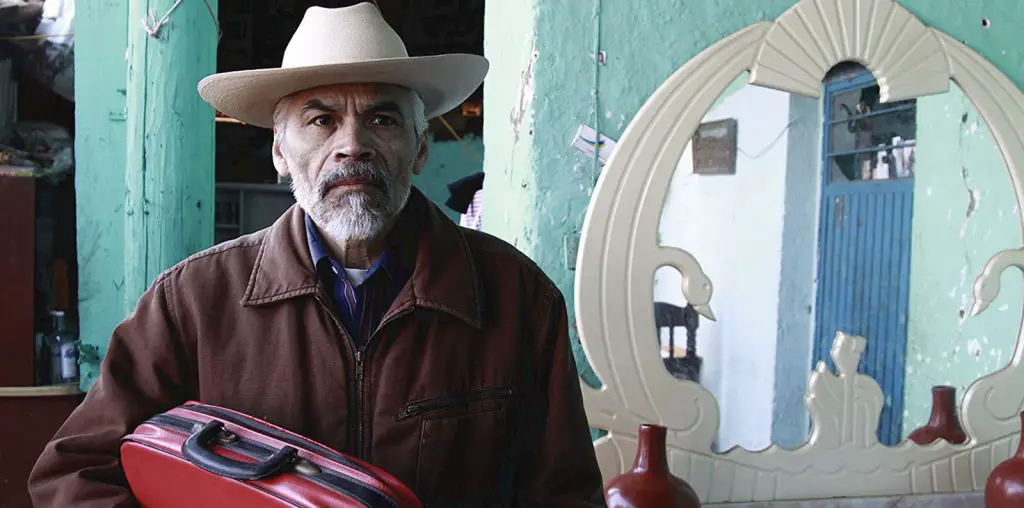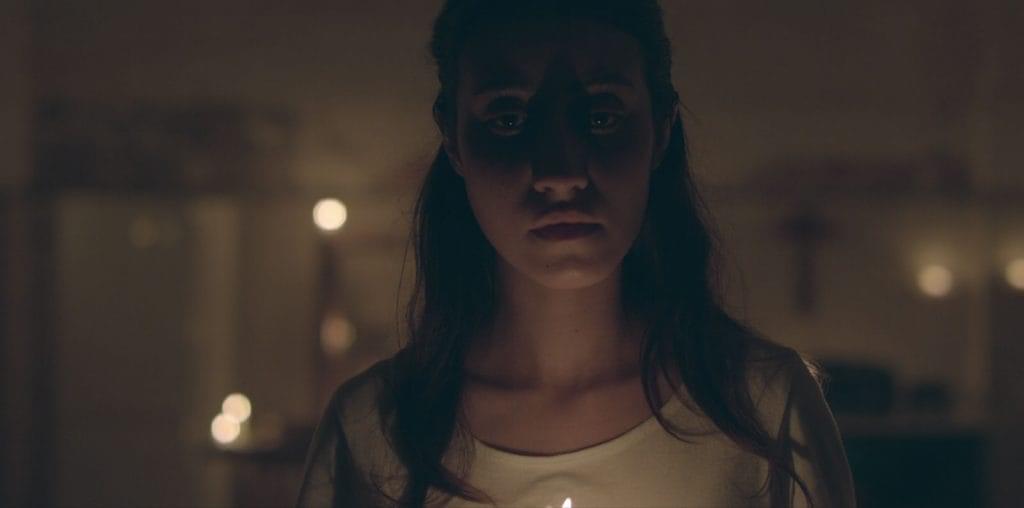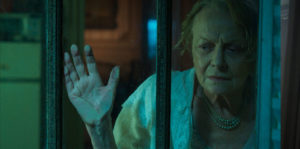
SCREAMFEST 2021 REVIEW! We all have wished, at one point or another, that we could live our lives without regrets and pursue our dreams free of charge. Yet, if we look at the reality of this aspiration, what it actually means is that we aim to live a life without consequence. However, a choice without a consequence is similar to taking a risk without a reward — nothing is learned, and we waste opportunities to improve ourselves and our relationships. In writer/director Gonzalo Calzada’s Nocturna: Side A – The Great Old Man’s Night, we are confronted with the inverse of the aforementioned utopian life, exploring an existence defined by what is absent and fading.
Ulises (Pepe Soriano) is a man nearing 100, with recurring headaches and chest pains, living on the first floor of an old apartment building. His long life has culminated with his children estranged, his friends long buried, and a troubled marriage to his wife Dalia (Marilú Marini). One night, they are startled by intense banging and screaming from the outside hallway, finding the distraught upstairs neighbor Elena (Desirée Salgueiro) demanding entry. Ulises refuses to let her in, so Elena hurls herself out of her window, breaking her neck in the courtyard outside of his apartment. The night quickly spirals into a fever dream of looping memories and lost time, shoving Ulises toward a reckoning with the ghosts of his past.
First and foremost, Nocturna: Side A – The Great Old Man’s Night is beautifully rendered. The express detail paid to the weathered conditions of Ulises’ apartment affords the whole setting a vibe that crosses the homey with the forgotten and the desperate. I am uncertain of any other film that manages to have this specific shade of bittersweet production design besides Satoshi Kon’s Tokyo Godfathers.
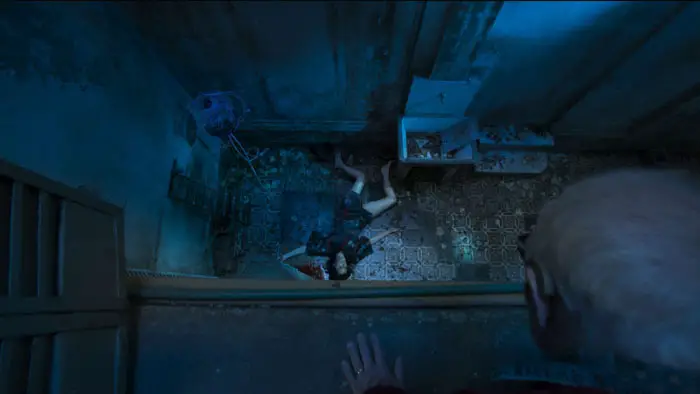
“…a fever dream of looping memories and lost time, shoving Ulises toward a reckoning with the ghosts of his past.”
Borders, artificial and symbolic, define cinematographer Claudio Beiza’s visuals: the main character is often seen through a fractured lens created from glass windows set into the internal walls which divide the rooms, adding further subconscious emphasis to his deteriorating health and mind. The camerawork is buttressed by the rich oranges, muted browns, and pale blues, which colorist Juan Manuel Casolati uses to charge the story with an ethereal and uncertain aura. These elements bolster the stellar performances by Soriano and Marini. It’s easy to empathize with them as we experience their regret and denial amongst their endless routine and longing for their past.
However, while all these aspects work towards the benefit, the evocative musical score doesn’t quite. The compositions are entirely appropriate for whichever sequence they’re being used, but they never seem to leave, regardless of the scene. Because of this overabundance, many moments aren’t able to simply speak for themselves, and it ultimately neuters some of the latter half’s natural efficacy. This tonal inconsistency is most apparent in the specific segments designed around Elena which, boast horror undertones. While the mystery thriller may be emotionally redolent, it is certainly not the slightest bit scary or unnerving.
Nocturna: Side A – The Great Old Man’s Night is the first part of a two-part series, with its sequel Nocturna: Side B – Where the Elephants Go to Die running only 67 minutes. Considering that brief length, I fear the conclusion will be more of an extended epilogue than a solid second half. Since I have not yet seen it, I don’t have much to justify this fear other than my impressions that Calzada has nothing else to say by the time these credits roll. Still, while it does not fully stick its landing, the film is an emotionally raw experience that forces its audience to accept some hard truths about themselves and their path in life.
Nocturna: Side A – The Great Old Man’s Night screened at the 2021 Los Angeles Screamfest.
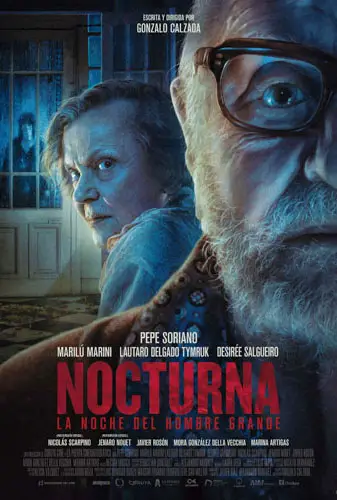
"…stellar performances by Soriano and Marini."

